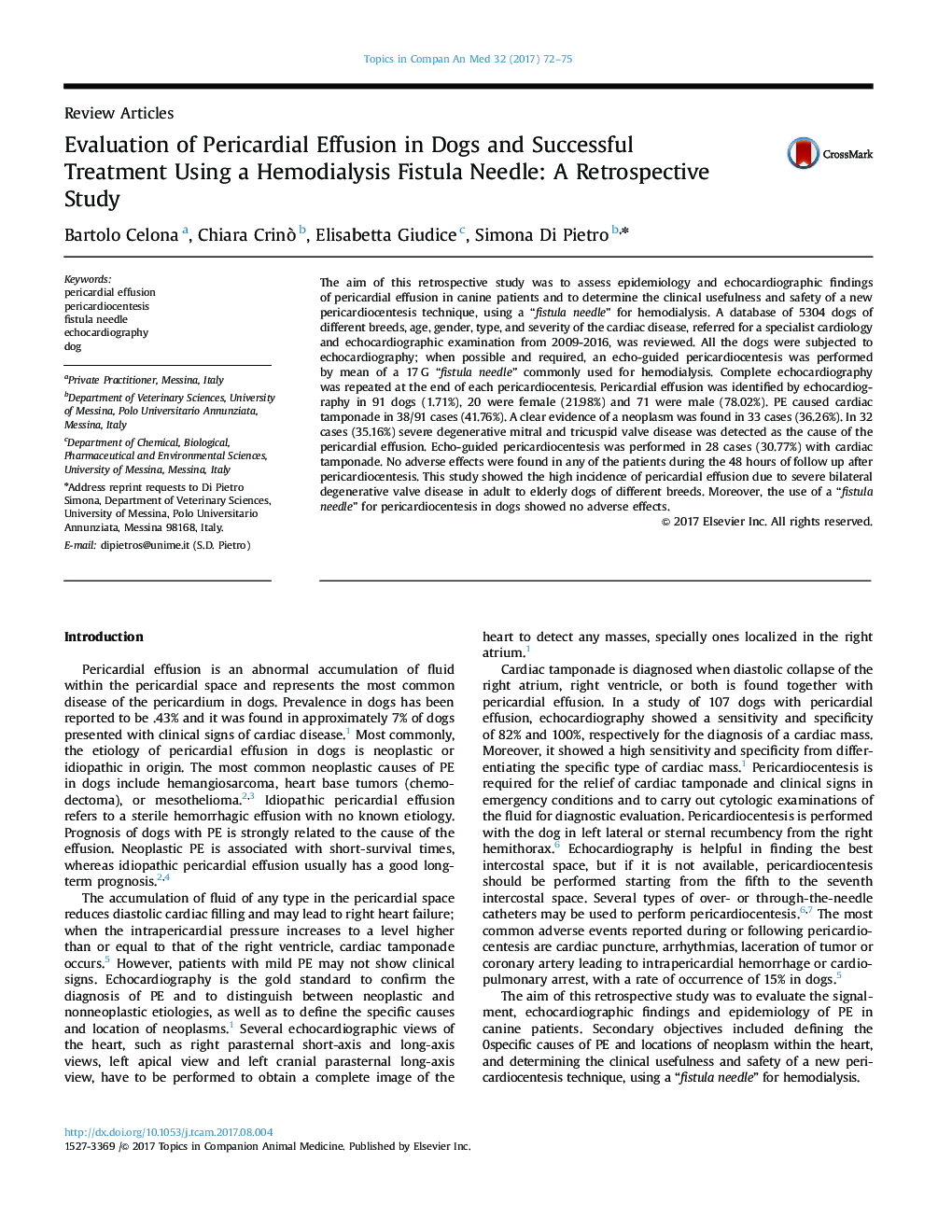| Article ID | Journal | Published Year | Pages | File Type |
|---|---|---|---|---|
| 5536091 | Topics in Companion Animal Medicine | 2017 | 4 Pages |
Abstract
The aim of this retrospective study was to assess epidemiology and echocardiographic findings of pericardial effusion in canine patients and to determine the clinical usefulness and safety of a new pericardiocentesis technique, using a “fistula needle” for hemodialysis. A database of 5304 dogs of different breeds, age, gender, type, and severity of the cardiac disease, referred for a specialist cardiology and echocardiographic examination from 2009-2016, was reviewed. All the dogs were subjected to echocardiography; when possible and required, an echo-guided pericardiocentesis was performed by mean of a 17Â G “fistula needle” commonly used for hemodialysis. Complete echocardiography was repeated at the end of each pericardiocentesis. Pericardial effusion was identified by echocardiography in 91 dogs (1.71%), 20 were female (21.98%) and 71 were male (78.02%). PE caused cardiac tamponade in 38/91 cases (41.76%). A clear evidence of a neoplasm was found in 33 cases (36.26%). In 32 cases (35.16%) severe degenerative mitral and tricuspid valve disease was detected as the cause of the pericardial effusion. Echo-guided pericardiocentesis was performed in 28 cases (30.77%) with cardiac tamponade. No adverse effects were found in any of the patients during the 48 hours of follow up after pericardiocentesis. This study showed the high incidence of pericardial effusion due to severe bilateral degenerative valve disease in adult to elderly dogs of different breeds. Moreover, the use of a “fistula needle” for pericardiocentesis in dogs showed no adverse effects.
Related Topics
Life Sciences
Agricultural and Biological Sciences
Animal Science and Zoology
Authors
Bartolo Celona, Chiara Crinò, Elisabetta Giudice, Simona Di Pietro,
